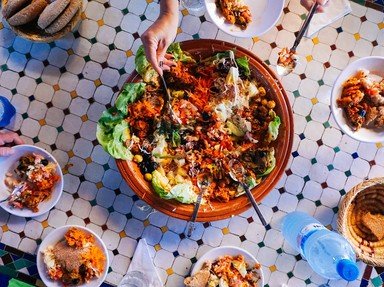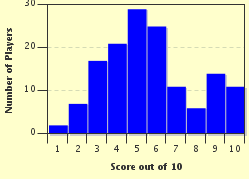Quiz Answer Key and Fun Facts
1. The first four mother sauces originated in the 19th century with French culinarian Antonin Careme. Which of the following is NOT one of the four original mother sauces?
2. As with many cooking preparations, the mother sauces each require a base and a thickening agent. While a Hollandaise uses an emulsion to thicken, three of the other mother sauces rely upon which substance to thicken the sauce?
3. Bechamel is the easiest of all of the mother sauces, as it involves mixing flour and butter to make roux and then adding milk. It can be flavored with a variety of herbs and spices and it serves as the originating mother sauce for a variety of common cream and white sauces. Which of the following is NOT one of the sauces derived from the Bechamel?
4. The Veloute sauce consists of mixing roux with a brown stock, and the Espagnole sauce is made by mixing roux with a white stock.
5. Espagnole sauce can be modified to create a thick demi-glace; one of the most classic flavorings involves seasoning the sauce with a small cheesecloth bag filled with bay leaf, parsley and fresh thyme. The use of these small cheesecloth bags in seasoning soups, stews, and sauces is a common practice; what are these bags called?
6. The Hollandaise sauce is made by emulsifying clarified butter and egg yolks. While it can be eaten with vegetables, such as asparagus, it is most commonly eaten over eggs on breakfast dishes. Which of the following is NOT one of the breakfast entrees that include Hollandaise sauce?
7. The Sauce Tomate involves mixing roux or reduction with what base ingredient?
8. Espagnole sauce is rich brown in color and is a great complement to meat, specifically beef. Four of the most popular 'child sauces' of Espagnole are the Sauce Bercy, Sauce Madeira, Chasseur sauce (aka hunter's sauce), and Sauce Robert. While each of these sauces are different, what is a key ingredient that each of them shares?
9. The Bordelaise sauce and the Bernaise sauce are both derived from the same mother sauce.
10. While the majority of the mother sauces are thickened with an emulsion or roux, an additional thickening procedure exists for sauces such as Hollandaise, whereby egg yolks and cream are mixed to contribute to a richer sauce. For example, the classic proportion is to mix 1 cup of cream with 3 egg yolks. What is the name of this cooking technique to thicken sauces, soups and stews?
Source: Author
KatieK54
This quiz was reviewed by FunTrivia editor
WesleyCrusher before going online.
Any errors found in FunTrivia content are routinely corrected through our feedback system.

